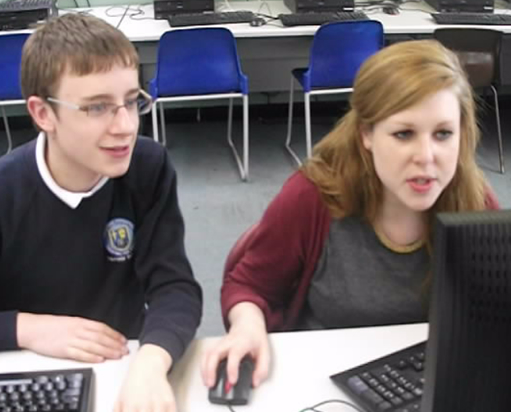Having Digital Leaders in your secondary school offers opportunities for students to lead technology and drive your e-learning strategy.
With over 12 years of experience as a teacher in secondary schools, I have seen the introduction of Digital Leaders as the single most influential factor in affecting a school’s use of technology. Digital Leaders is based on empowering students to share their expertise They can offer a whole array of support for teachers and students that will enhance ICT skills and use, not only for those in the scheme but the whole school.
Digital Leaders is a very flexible model and can be tailored to suit your school but here are some examples of good practice in secondary schools:
- Tech Planning Assistant– Regardless of the subject being taught, there are likely to be areas of technology that can be used to improve teaching and learning. Digital Leaders can work alongside teachers on uses of technology to improve planned lessons (e.g. Researching and suggesting particular software/tools that can be used for particular tasks; checking reference sources for their quality; improving/updating the teachers’ presentations)
- Classroom Tech Assistant – Assisting teachers with the use of IT in the classroom where the student becomes the ‘go to’ person to demonstrate or to give advice to the teacher (e.g. Digital Leaders are told in advance what software is going to be used and familiarise themselves with it. They show the teacher and/or class how to operate software features; they provide user guides for software being used)
- Digital Peer – Being a student who others in the classroom look to for help when using technology (e.g. assisting fellow students when they get stuck with certain software, suggesting ways to improve work through using a certain piece of software or using a certain technique)
- School Tech Rep – Highlighting the good practice that is going in your school with technology, to all stakeholders and/or for promotion outside of the school (e.g. Digital Leaders demonstrating inspirational students’ work using particular software at presentation evenings; presenting to staff at training sessions/briefings on new web 2.0 tools that teachers may want to consider using in their lessons; presenting at conferences)
- The Onliner – Digital Leaders are deployed in adding, editing and/or organising online content (e.g. Having their own website or pages on the school website; writing blog posts on activities in school; policing blog comments and forums for inappropriate comments from their peers)
- Digital Clubbers – Having specific activity groups or clubs set up and run by Digital Leaders in school (e.g. Animation, programming, Photoshop clubs are advertised and manned by Digital Leaders at lunchtimes)
- Young Connectors – Connect and communicate with students in other schools (e.g. Digital Leaders contribute to national and international networks on the use of technology by blogging, commenting on blogs, sharing ideas; specific projects such as global awareness has students gaining insight into other communities’ lives through the Digital Leader network)
Regardless of how you see a Digital Leaders scheme making a difference in your school, I urge you to get involved.

